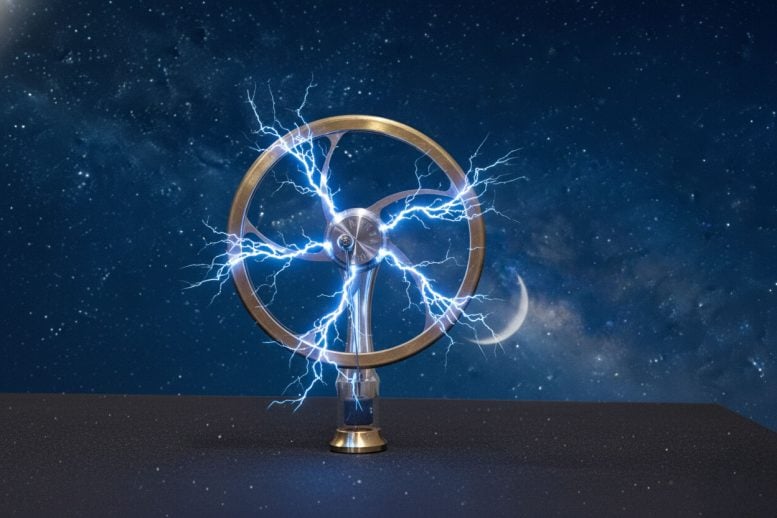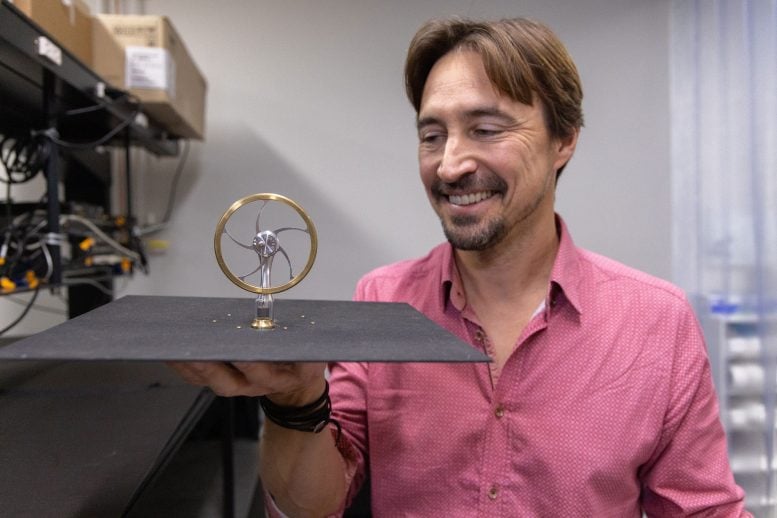
Researchers have created a device that generates mechanical power at night by harnessing the natural temperature difference between warm ground and the cold of outer space.
Engineers at the University of California, Davis, have created a device capable of producing mechanical energy at night by taking advantage of the warmth near the ground and the extreme cold of outer space. This approach could support practical uses such as moving air through greenhouses or other structures. The research was recently published in the journal Science Advances.
The device is based on a Stirling engine, a type of machine that operates using temperature differences. According to Jeremy Munday, professor of electrical and computer engineering at UC Davis and co-author of the study, many engines, including internal combustion engines, require a large temperature gap to generate power. A Stirling engine, however, can run with only a small temperature contrast, similar to the difference between a hot cup of coffee and the surrounding air.
“These engines are very efficient when only small temperature differences exist, whereas other types of engines work better with larger temperature differences and can produce more power,” Munday said.
Linking Ground Heat to the Cold of Space
Normally, a Stirling engine functions by placing one side in contact with a heat source while the opposite side is connected to a cooler environment.
“If you just set it on the table, it’s not going to produce any power on its own because all sides are the same temperature,” Munday said.

One way to generate a temperature difference, of course, is to heat up one side by burning fuel. Munday and graduate student researcher Tristan Deppe wondered if instead they could connect the cold side to something very, very cold but also very far away: deep space.
“It doesn’t actually have to touch space physically, it can just interact radiatively with space,” Munday said. It’s like standing outside on a cold, clear night: Your head will quickly start to feel cold as heat radiates away.
Testing the Radiative Cooling Concept
Deppe and Munday’s idea was to take a simple Stirling engine (essentially a piston driving a flywheel), put it on a panel that acts as a heat-radiating antenna and sit the whole thing on the ground outdoors at night. The ground acts as the warm side of the engine and the antenna channels the cold of space.
A year of night time experiments shows that the small device can indeed generate at least 400 milliwatts of mechanical power per square meter. The researchers used the device experimentally to directly power a fan and also coupled it to a small electrical motor to generate current.
The experiments show that it is possible to generate useful amounts of power from the night sky. The potential is greatest in areas where humidity is low and night skies are usually clear, Munday said. The principle could be used, for example, to ventilate greenhouses or residential buildings.
Reference: “Mechanical power generation using Earth’s ambient radiation” by Tristan J. Deppe and Jeremy N. Munday, 12 November 2025, Science Advances.
DOI: 10.1126/sciadv.adw6833
UC Davis has filed a provisional patent related to the work.
Never miss a breakthrough: Join the SciTechDaily newsletter.
Follow us on Google, Discover, and News.
